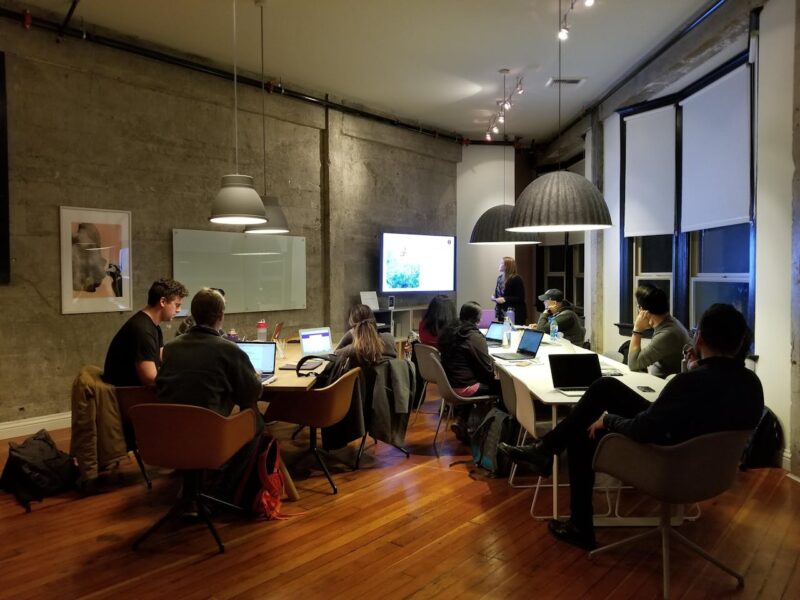Calibrating Team Resonance Through Linguistic Bridging in an Offshore Development Center
Understanding Team Resonance in an Offshore Development Center
Why Team Resonance Matters in Distributed Software Teams
In an offshore development center, team resonance refers to the harmony in communication, collaboration, and mutual understanding among team members spread across different locations and time zones. It’s a critical factor in maintaining productivity, cohesion, and long-term success for globally distributed software teams.
Even highly skilled developers can struggle if team dynamics are misaligned. Miscommunication, cultural differences, and unclear expectations often lead to delays and increased costs—not because of a lack of talent, but due to a breakdown in shared understanding.
This makes team resonance especially important when collaborating with offshore development centers in countries like Vietnam, Poland, or the Philippines. These regions are known for their technical expertise, but differences in communication styles can still create friction if not addressed thoughtfully.
How Language Shapes Collaboration in Offshore Teams
Language is more than just a tool for exchanging information—it’s how teams express intent, emotions, and ideas. In an offshore development center, clear and thoughtful communication forms the backbone of effective collaboration and decision-making.
Language gaps can lead to misunderstandings, duplicated work, or strained relationships. This is particularly relevant when teams in the U.S. or Western Europe work with developers from countries where English isn’t the first language. Even small miscommunications can snowball into larger issues.
Countries like Vietnam have made significant strides in English proficiency within the tech industry. Still, fostering a shared understanding through intentional communication practices remains essential to bridge linguistic and cultural gaps.
Bridging these gaps doesn’t mean eliminating accents or enforcing rigid speech norms. It means creating space for clarity, empathy, and mutual understanding in everyday interactions.
Strategies for Linguistic Bridging in Offshore Development Centers
Building a Shared Communication Framework
One of the most effective ways to bridge language differences is by establishing a shared communication framework. This includes standardized terminology, clear documentation practices, and consistent meeting protocols. These elements help reduce confusion and promote alignment across diverse teams.
For example, defining what “done” means in a sprint or agreeing on how to report and prioritize bugs can prevent misunderstandings. A shared framework becomes a common language that helps teams operate smoothly, regardless of location.
Developers in regions like Vietnam, India, and Eastern Europe often adapt quickly to these frameworks thanks to their experience working with international clients and familiarity with agile practices.
Leveraging Language Tools and Technology
Technology can support linguistic bridging by enhancing clarity and easing communication. Tools like real-time translation, grammar checkers, and collaboration platforms such as Slack or Confluence can help distributed teams stay aligned.
But tools alone aren’t enough—they work best when paired with training and realistic expectations. Teams need to understand how to use these tools effectively and where their limitations lie.
Encouraging asynchronous communication—through written updates, code comments, and documentation—also allows team members to process information at their own pace, reducing the pressure of real-time fluency.
Offshore teams in places like Vietnam and Eastern Europe often come with a strong foundation in using these tools, which can help streamline onboarding and reduce early communication friction.
Encouraging Cross-Cultural Communication Training
Effective communication goes beyond language—it’s also about understanding cultural context. Cross-cultural training helps team members grasp not just what is said, but how and why it’s said, fostering empathy and reducing misinterpretations.
These programs can include role-playing, cultural awareness sessions, and feedback exercises. They help teams navigate different communication styles, decision-making approaches, and conflict resolution strategies.
Offshore development centers in countries like Vietnam and Ukraine often invest in this kind of training to better align with Western business practices. These efforts not only improve communication but also strengthen relationships and team cohesion.
The result is a more connected and productive team environment where collaboration can flourish.
Measuring and Maintaining Team Resonance Over Time
How to Assess Communication Effectiveness
Communication strategies should be regularly evaluated to ensure they’re working. Feedback loops, sprint retrospectives, and performance reviews can all provide insight into how well teams are connecting.
Metrics like reduced rework, faster onboarding, and improved sprint velocity can indicate stronger communication. At the same time, qualitative feedback from team members can uncover issues that numbers alone might miss.
Tools like anonymous surveys and one-on-one check-ins give team members a safe space to share concerns or suggest improvements. These inputs help refine communication practices and support a culture of openness.
Adapting Communication Practices as Teams Evolve
As offshore development centers grow or shift focus, communication needs often change. What works for a small team may not scale effectively as the team expands or takes on more complex projects.
Periodically revisiting and updating communication practices—such as documentation standards or meeting formats—helps ensure continued alignment.
Teams in Vietnam, for instance, are often praised for their adaptability and openness to process improvements. This flexibility supports long-term collaboration and helps teams stay in sync as they evolve.
A mindset of continuous improvement is key to maintaining clarity and team resonance, even as circumstances shift.
What’s Next? Sustaining Long-Term Collaboration Across Borders
Embedding Linguistic Bridging into Team Culture
Linguistic bridging shouldn’t be a one-time initiative—it needs to be part of the team’s culture. That means integrating communication best practices into onboarding, leadership development, and regular team evaluations.
Conducting periodic communication audits and process reviews can help identify areas for improvement and keep linguistic alignment front and center. When clear, respectful communication becomes a habit, collaboration becomes more natural.
This cultural integration builds resilience and adaptability, allowing teams to maintain performance even when challenges arise.
Building Trust Through Communication
At its core, linguistic bridging is about trust. When team members feel understood and respected, they’re more likely to contribute openly, share ideas, and take initiative. Trust is what turns a group of individuals into a high-performing team.
Offshore development centers in places like Vietnam, Romania, and the Philippines have shown that trust can be built through consistent, clear, and culturally aware communication. These teams thrive when communication goes beyond function and becomes a foundation for connection.
By embedding linguistic alignment into daily operations, organizations can unlock the full potential of their global teams—leading to better outcomes and more durable partnerships.




